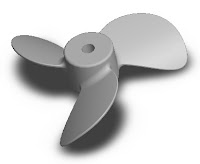2. Claims & Reality?
Now first on ISO claims itself that - ISO standards also serve to safeguard consumers, and users in general, of products and services - as well as to make their lives simpler. HOW???????????????
Safeguard consumers & users - How???? To understand this we will start from the first Clause of ISO manual which is related to SCOPE - Scope of coverage of activities under ISO. This is the biggest loophole & biggest problem in the entire ISO standard which is used as an escape route wherever troublesome processes are involved.
The classic example:
Why the Soft drink companies do not specify the presence of pesticides in their product and then why not they do specify the limit of these pesticides which has been already proved by many international organizations. This is very prominent especially in India due to local government regulations, but ISO do not work on local regulations - They claim to be “International Standards”. Don't forget that these companies are also certified by ISO for their Indian operations.
So the first learning or flaw is that for any one kind of product there should be an internationally acceptable quality parameters (If you claim to be an International Standard - else ISO is not required because each country is already having its own standards & therefore nobody requires another standard which do not ask for improvement to an international level and just try to sell you a certificate with which your business can fetch more money – I doubt this also because the image of ISO is so diluted that there is no credit or premium for it) e.g. for a toothpaste of non-fluoride nature it should not have already identified harmful ingredients beyond the prescribed limit.
The first difference is that ISO says – You specify the quality but how it can be true especially for consumer products. So for this category of FMCG etc the quality is not the content of the product in terms of purity but in my opinion it is the limit of harmful contents in the product, then only it can safeguard the customer.
The example – according to one report (I do not have any legal binding here – this is based on the reports published & broadcasted in newspapers & TV channels), one of the government agency found the objectionable content in cold drinks of two world famous companies (everybody knows them) in India beyond the prescribed limit.
Even if we assume that it was qualifying local standards (Indian in this case) then how can ISO allow manufacturing a product for which WHO or any other world / international organization has set a different limit as harmful content? If it is so, then ISO is not an international standard OR I can say not following international standard.
One may argue that ISO is not setting quality of product its basically setting the quality standard for processes. OK then I must say they should not claim – “ISO standards also serve to safeguard consumers and users in general” the first line of their claim.
In fact, no activity of ISO can be related to safeguarding the interest of consumers, business partners, employees etc. I will put some example for them in the next few posts one by one. Yes, they have only one interest by partnering with some of the foreign business groups, who will ask manufacturers of any third world country to have ISO to qualify as their standard supplier. This way they put cost pressure on developing countries & simultaneously providing business to ISO.
Learning -1 Each product should have internationally specified limits for each harmful content which should be essentially written on the product. This should be the first condition of having ISO in any country any region on this globe.
Disclaimer - This is a series of my personal views on ISO systems, its implementation, Effectiveness etc. They do not carry any legal issue related to my personal views under the human right of "Freedom of Speech".



























